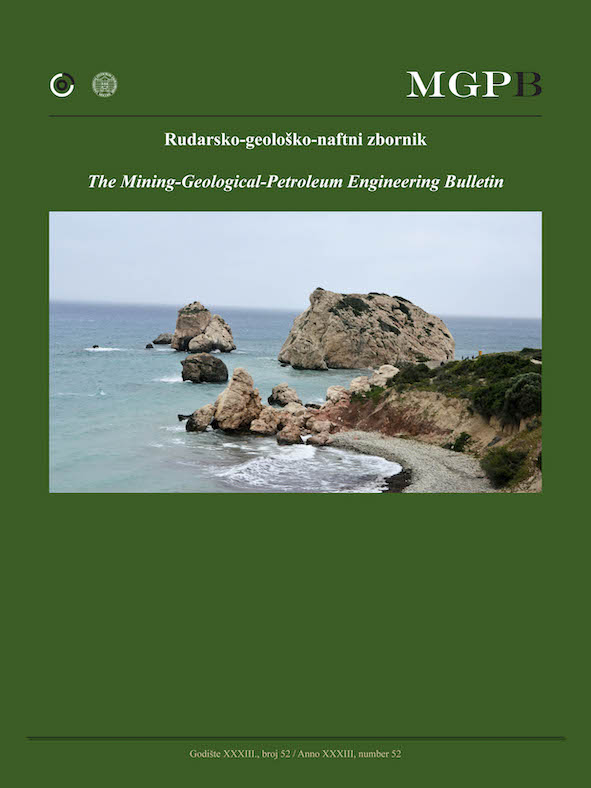Determination of Methane Desorption Zone for the design of a drainage borehole Pattern (Case Study: E4 Panel of the Tabas Mechanized Coal Mine, Iran)
Methane Drainage
DOI:
https://doi.org/10.17794/rgn.2021.1.6Keywords:
Coal seam, Methane drainage, Desorption zone, Borehole, Longwall mining, Tabas coal mineAbstract
Underground coal mining is known as one of the major sources of methane emissions which mainly occurs after underground coal extraction. Rock strata in-situ methane can potentially be the most significant hazard in coal mining operations. To prevent or minimize the risks of methane emissions, methane drainage approaches have been adopted by coal mines. Rock mass methane drainage is the most efficient and effective approach toward controlling methane hazards as it prevents and reduces the frequency of methane emissions, outflows into the working area and sudden outbursts of methane and rocks. The method includes drilling boreholes from the tailgate side to the unstressed zone in the roof and floor strata above and below a working coal seam. The coal seam gas content in Tabas Parvadeh I is estimated to be about 16 m3/t, which is relatively high. Based on exploration data, five distinct coal seams have been identified (B1, B2, C1, C2 and D) at the coal deposit and currently C1 is being worked. Considering the high value of C1 gas content and surrounding rocks, the Methane Drainage System (MDS) has been utilized for gas drainage. This paper tries to determine the desorption area which is essential and helpful for the selection of an effective drilling pattern into the adjacent coal seams. In this study, the methane drainage zone in the E4 panel of the Tabas coal mine was calculated using experimental equations and a drainage borehole pattern was determined.Downloads
Published
How to Cite
Issue
Section
License
Copyright (c) 2020 authors and journal

This work is licensed under a Creative Commons Attribution 4.0 International License.
Creative Commons-BY
Authors who publish with this journal agree to the following terms:
In agreeing this form, you certify that:
- You read the ethical codex of the RGN zbornik available at journal web.
- You submitted work is your original work, and has not previously been published and does not include any form of plagiarism.
- You own copyright in the submitted work, and are therefore permitted to assign the licence to publish to RGN zbornik.
- Your submitted work contains no violation of any existing copyright or other third party right or any material of an obscene, libellous or otherwise unlawful nature.
- You have obtained permission for and acknowledged the source of any illustrations, diagrams or other material included in the work of which you are not the copyright owner.
- You have taken due care to ensure the accuracy of the work, and that, to the best of your knowledge, there are no false statements made within it.
- All co-authors of this submitted work are aware of, and in agreement with, the terms of this licence and that the submitted manuscript has been approved by these authors.
Publication licence
You retain copyright in your submitted work, according to journal license policy (CC-BY). By signing this form you agree that RGN zbornik may publish it under the publication licence. In summary the licence allows the following:
Anyone is free:
- To copy, distribute, display, and perform the work.
- To make derivative works.
Under the following conditions:
- The original author must always be given credit.
- The work may not be used for commercial purposes.
- If the work is altered, transformed, or built upon, the resulting work may only be distributed under a licence identical to this one.
Exceptions to the licence
In addition to publishing the work printed under the above licence, RGN zbornik will also enable the work to be visible online.
The journal editorial can change the licence rules anytime but it cannot retroactively restrict author(s) rights.


